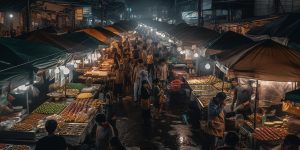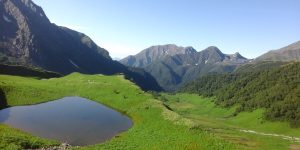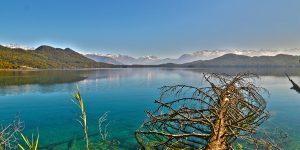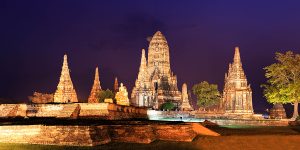They say Kathmandu does not define Nepal and nothing justifies it more when you experience it for yourself. Four years in beed and travel was the perk that came with the job. Over the past few years, I have travelled to places where I would never have set foot, traversed to about three dozen districts- across Mechi to Mahakali getting a good taste of the mountains, hills and plains of Nepal. Reminiscing on each of my journeys, I have much to speak of Nepal and its “Nepalipana”.
Many Nepalis have found opportunities beyond borders in the oil rich countries of the Gulf, leaving behind several prospects for other people to tap into. Unfortunately, with the younger generation going missing intermittently, the older generation and community’s incapacitated state leave few things to pin our hopes on. Nonetheless, sparks of ideas and innovation (like the smokeless chulos) have been brought in by various social organizations to capitalize on the existing opportunities (especially in forestry and Non Timber Forestry Products, agriculture and dairy farming), however the impact has been lower than expected.
Strangely, it is not that people have little interest in taking on opportunities and making a change; it is sometimes the institutions that pay little attention to those that want to make a difference. Change requires significant investments; however, institutions that provide financing opportunities provide little to facilitate change, and continue to remain inclined towards traditional processes. Investments that deliver impact are constrained due to the lack of bankable clients (one with adequate collaterals) and the unwillingness to diversify their portfolios due to the high risks associated with the nature of the loan requirement in remote areas. Banks and financial institutions have been established in almost every district headquarters, but they have not been able to localize themselves to the demands of the people and breathe life into the business operations that could make a significant impact in these areas.
Where banks have not extended its reach, one thing that has is Red Bull- the energy drink, which has reached every nook and corner of Nepal. Interestingly, the route taken by Red Bull continues to remain untouched and untried by the many domestic products in Nepal. Hinwa (a Nepali brand of wine from Sankhuwasabha) is one that has made it so far, with stocks lasting until Dashain every year. Also Kathmandu is not the only market, globalization has opened a whole new playing field wherein Nepal possesses the resources which can be developed to enter and compete global products. If body shop can sell at a premium, then a similar Nepali product like Laavanya can also reach this level. Products like these need to be infused with technical intervention and market linkages that would help in expanding their reach and acceptability. I often found people stuck or satisfied selling raw or semi-finished goods that fetch meager returns when with a bit of value addition, these products could make it to the shelves. The major issue here is a lack of training and market linkages, and the well-known Nepali short term psyche.
Several regions in the country are not connected by road or by air. There are roads that can barely be called roads (bulldozed, un-pitched, washed away and resurrected every year) and airports that are open meadows such as the Mahendranagar airport. These areas are far beyond reach yet flashes of their stories cover entire pages of a newspaper. They top the lists of every government’s action plan but are still kept far below the radar of the government. These are the districts that have been deprived of basic social facilities- food, medicine, healthcare and transport, and yet the government continues to remain a pathetic towards them and make a mockery of the little services they provide them. In the light of such fate, communities in these area shave joined hands to build a network of resources they need. For instance, communities have transferred ownership of natural resources from the state to themselves. This has led to proper management, improvement in their livelihood and overall development of the region. The micro hydro project in Ghunsa Valley or the wind energy project on the way to Nar-Phu village in Gorkha that light these remote villages for almost 24hrs a day is a good example of successful community efforts.
Politics is the topic of discussion in most urban areas where people are supposedly very busy, and yet people continue to complain rather take responsibility and work towards facilitating positive change. People living in the remote areas of Nepal on the other hand have acquainted themselves to a life free of drudgery and complaints. The women, children and elderly lead simple, happy and composed lives. They are unaffected by power and politics, and unaware of what is happening or what a Constitution means. Yet they are, generous, hospitable and helpful, and religiously follow their belief in culture and tradition, constantly working to survive and maintaining a spirit of positivity. Perhaps this is what is missing in urban Nepal. It is only when you travel to these remote regions of the country that you find the people that continue to identify and represent the brand Nepal that truly was.











